Concrete Condition Assessments: When and Why to Use Non-Destructive Testing
Concrete may be strong, but it’s not invincible. Over time, environmental exposure, repeated loading, freeze-thaw cycles, and events like fire or flooding can lead to internal cracking, corrosion, or voids before any surface damage is visible. Whether you're planning targeted repairs or full-scale demolition, identifying internal issues early helps avoid unexpected delays, preserve structural integrity, and support better decision-making.
That’s where non-destructive testing (NDT) comes in.
What is Non-Destructive Testing?
Just like a doctor uses an MRI machine to diagnose diseases without making incisions, our team of engineers and technicians use NDT to understand what’s happening inside concrete structures, without damaging it. It’s an efficient, data-driven way to identify hidden problems, confirm construction quality, and plan safer, more cost-effective repairs.
When it comes to NDT, at VCS Engineering, our goal is to help you make informed, confident decisions. Before the jackhammers come out.
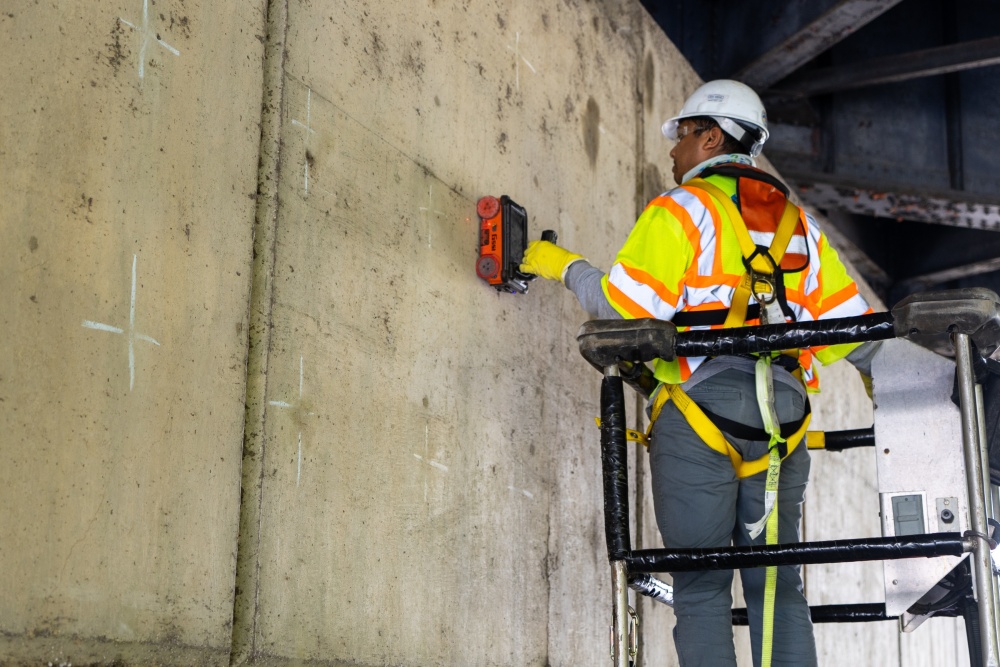
The Value of NDT: Better Data, Smarter Decisions
Traditional inspection methods like acoustic or visual assessments provide only surface-level insights. Coring can reveal more, but at a cost. It’s invasive, time-consuming, and compromises the very structure you’re trying to preserve.
NDT offers a smarter alternative. When applied thoughtfully, NDT, helps you:
- Design with confidence – reliable data allows engineers to develop targeted, cost-effective repair strategies rooted in fact, not assumption.
- Minimize risk – by confirming conditions ahead of time, NDT helps reduce change orders, delays and scope creep once the work begins.
- Plan for the long term – Repeatable and standardized testing enables condition monitoring over time, supporting asset management and life-cycle planning
- Save money by reducing unknowns - When you understand what's happening, you avoid overdesigning (or underestimating) repairs
Whether you're a structure owner looking to avoid unplanned, costly repairs, or an engineer trying to design the right rehabilitation strategy, NDT helps you get it right the first time
When to use NDT: Red Flags and Opportunities
There are a few telltale signs that it’s time to bring in NDT:
- Visible cracks, staining, or spalling
- Water ingress or leaks
- Signs of corrosion (rust, delamination, or concrete pop-outs)
- Unexpected movement, deflection, or vibration
- Previous exposure to fire, flooding, or impacts
- Unknown as-built conditions or missing drawings
- Quality control for grouting, injection, or crack repair
- Structures nearing or past their expected service life
In short: if you’re unsure what’s going on inside the concrete—or want to confirm the condition before repair work starts—NDT is a smart investment.

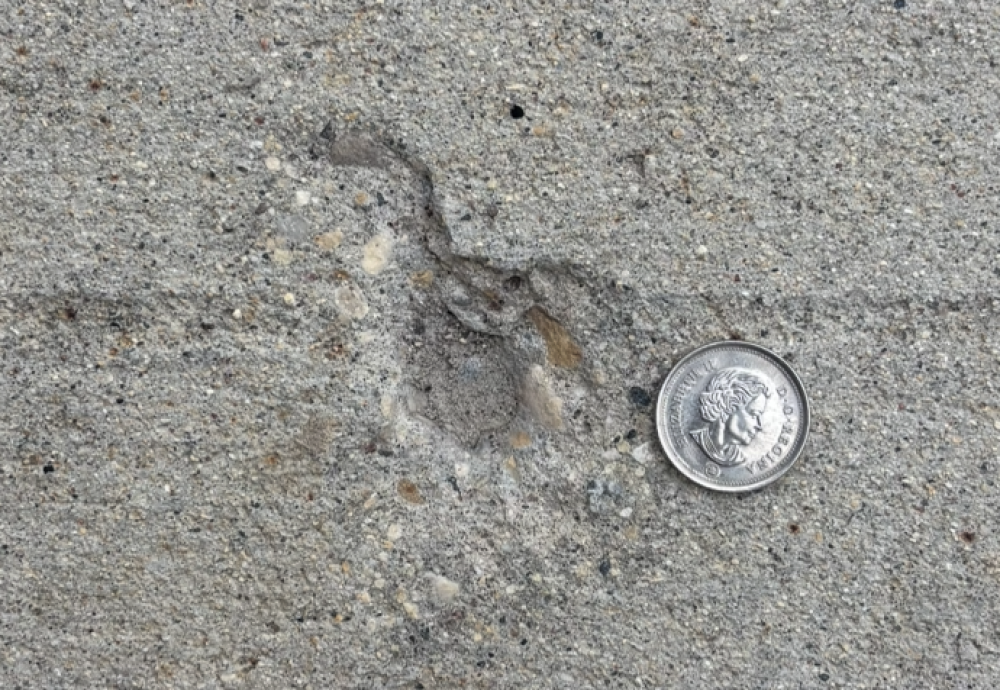
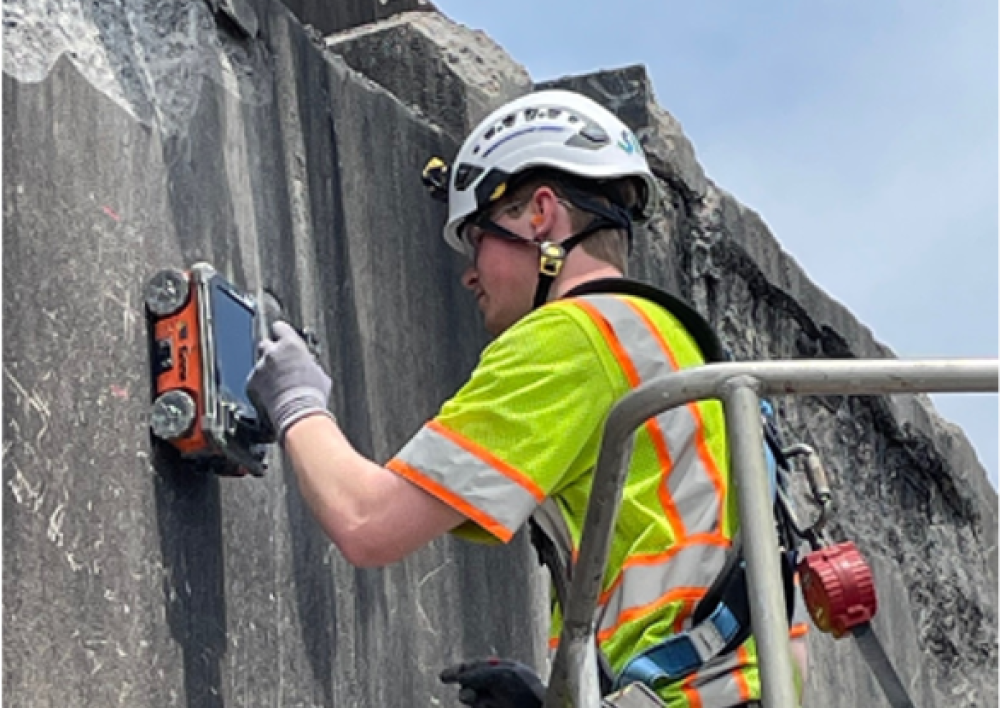
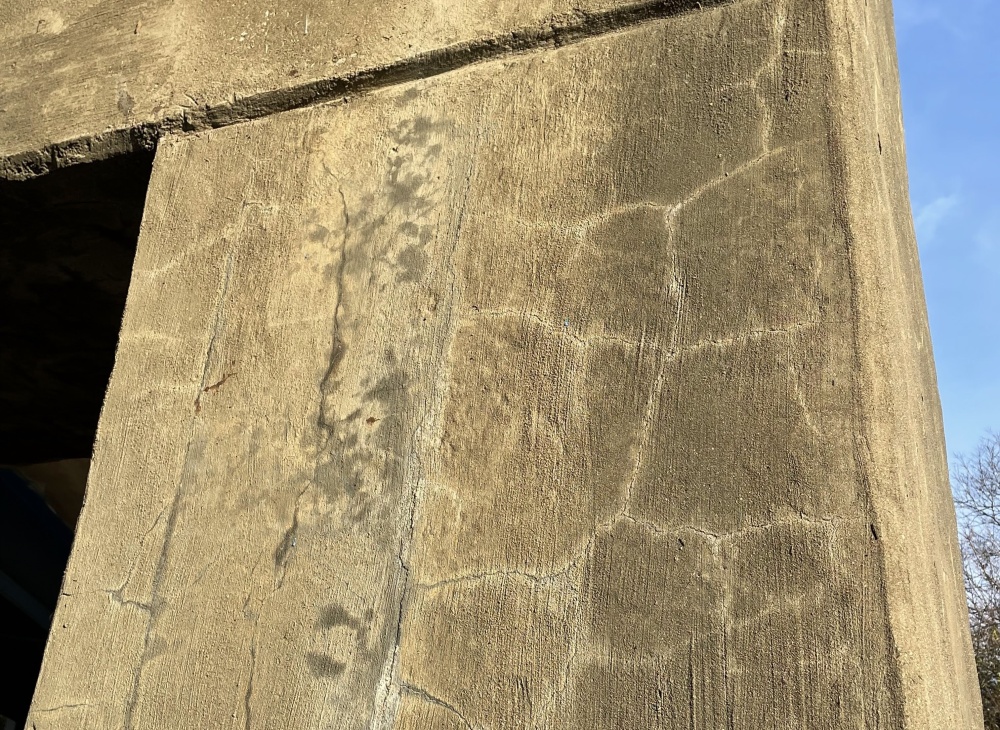
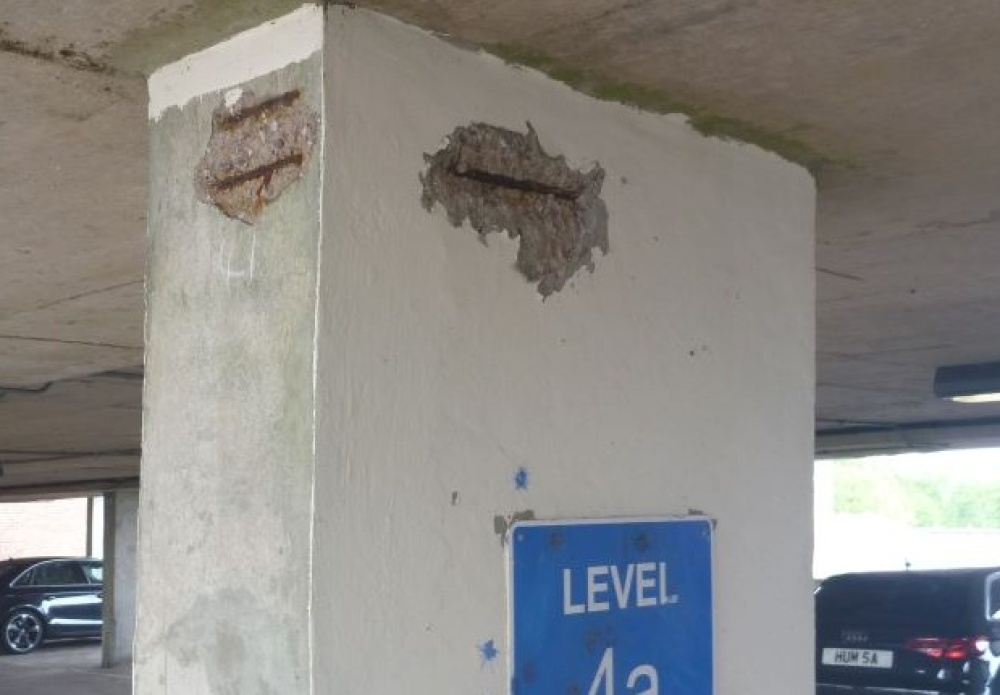
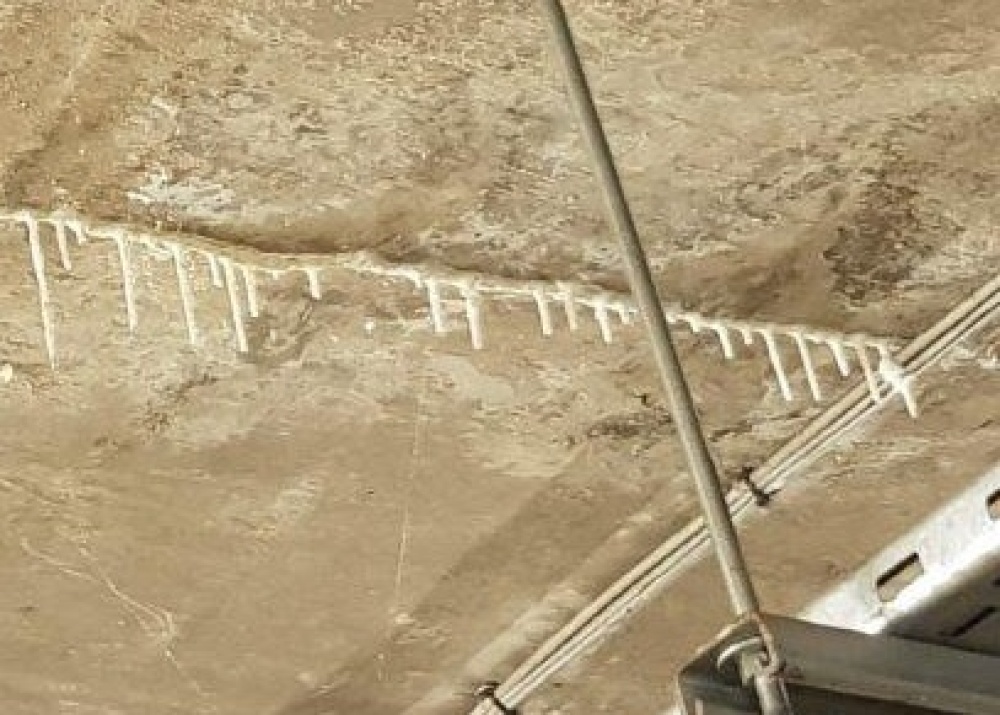
How NDT Addresses Your Specific Concrete Challenges
Whether you need to check structural integrity, assess corrosion risk, or confirm what’s embedded in your concrete, there’s an NDT method that fits. Below, we’ve organized the most effective techniques by function so you can quickly find the right approach for your project.
Structural Integrity & Defect Detection
Impact Echo / Pulse Velocity (IE/PV)
IE/PV, also referred to as sonic/ultrasonic testing, sends sound waves through concrete to identify internal defects like voids, honeycombing, and cracking. It also estimates in-situ compressive strength, ideal for understanding material performance without coring.
Our team uses IE/PV for:
- Assessing post-tensioned tendons
- Finding delamination or weak zones
- Estimating compressive strength
- Pile length testing
- Ongoing maintenance planning
- Rail safety assurance
- Roadway signage bolts
- Steel bridge elements
- Embedded pipe inspections
Specialized Applications: Extending the use of IE/PV Testing
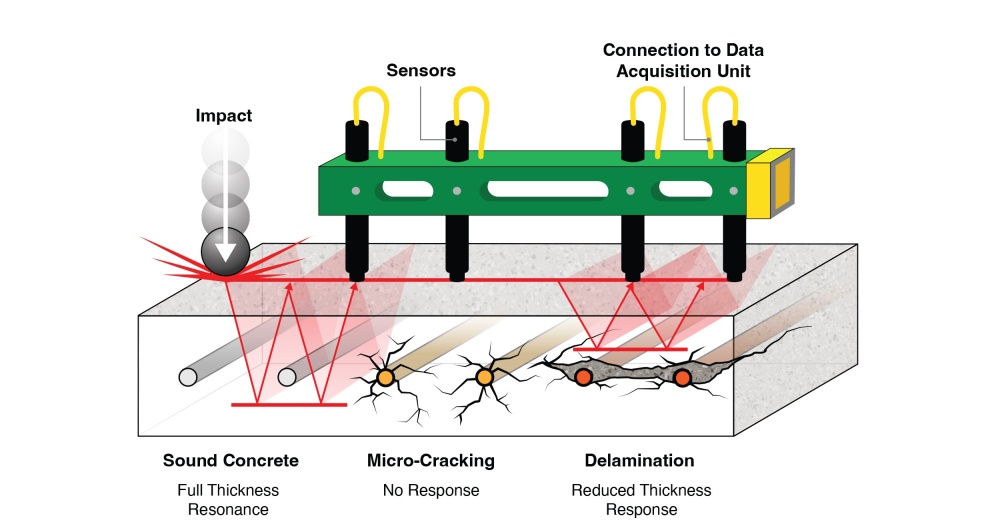
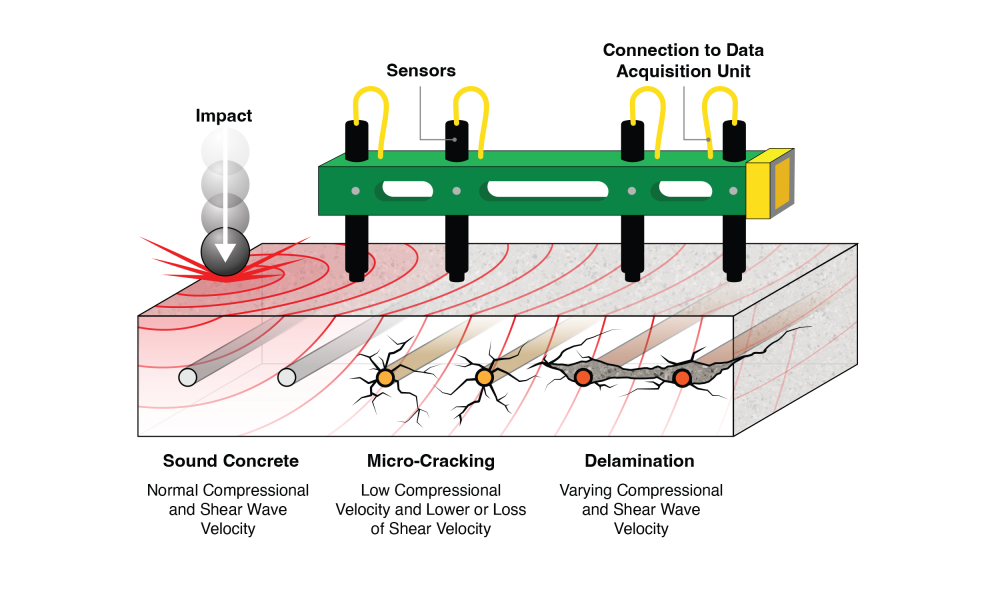
Ultrasonic Thickness (UT)
This applies pulse velocity to measure remaining steel thickness and detect fractures in embedded elements like beams, bolts, and pipe. It’s particularly helpful for assessing corrosion-related section loss in locations where inspection isn’t possible.
Railroad Tie Testing (ACTT)
VCS’s Automated Concrete Tie Tester (ACTT) uses pulse velocity to evaluate the internal condition of concrete railroad ties in real time, automating maintenance decisions. It’s fast, accurate, and minimizes disruptions to rail operations.
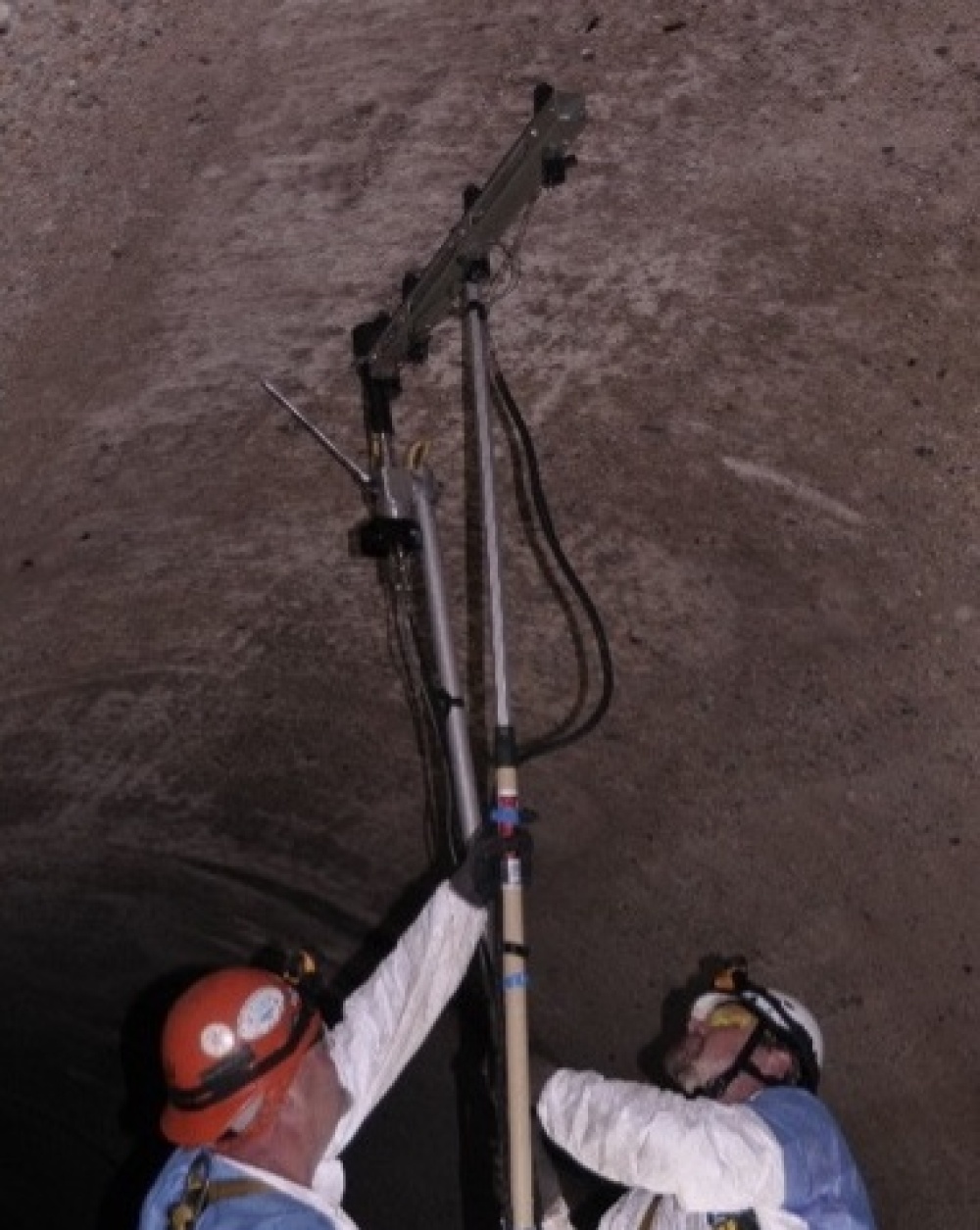
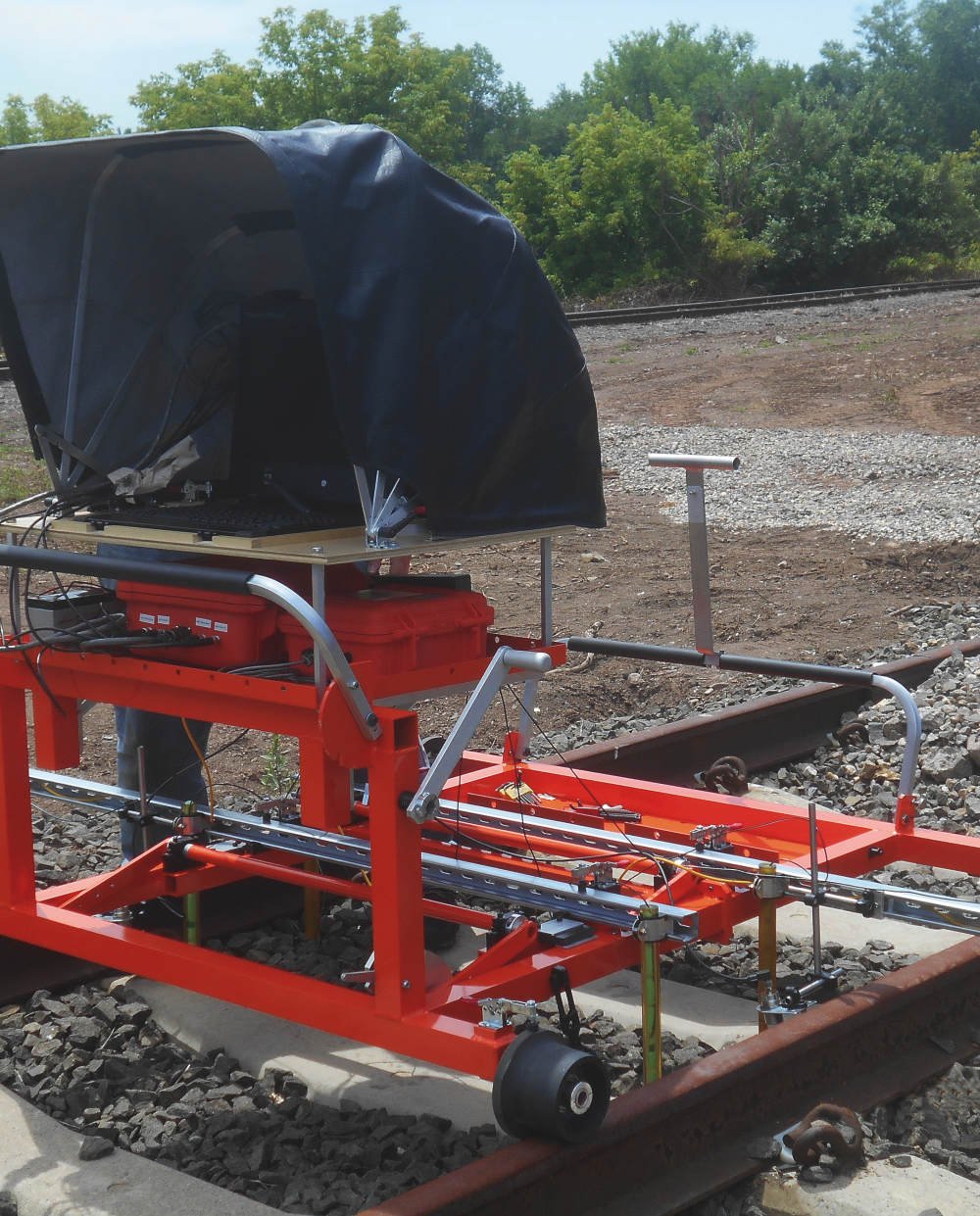
Other Structural Integrity & Defect Detection
Acoustic Tomography
When internal defects aren’t visible at the surface, and conventional methods fall short, acoustic tomography provides a deeper look. This technique uses a network of sensors to transmit and receive low-frequency sound waves through the structure, generating a 3D image of the concrete's internal condition. It’s especially helpful for locating defects that would have otherwise gone unnoticed during visual inspection and verifying that grouting or crack injection was successful.
Our team uses it for:
- Validating repair work such as crack injection or post-tenson grouting
- Investigating unknown or inaccessible internal conditions in slabs, piers or structural elements
- Support forensic assessments where surface symptoms don’t match structural behavior
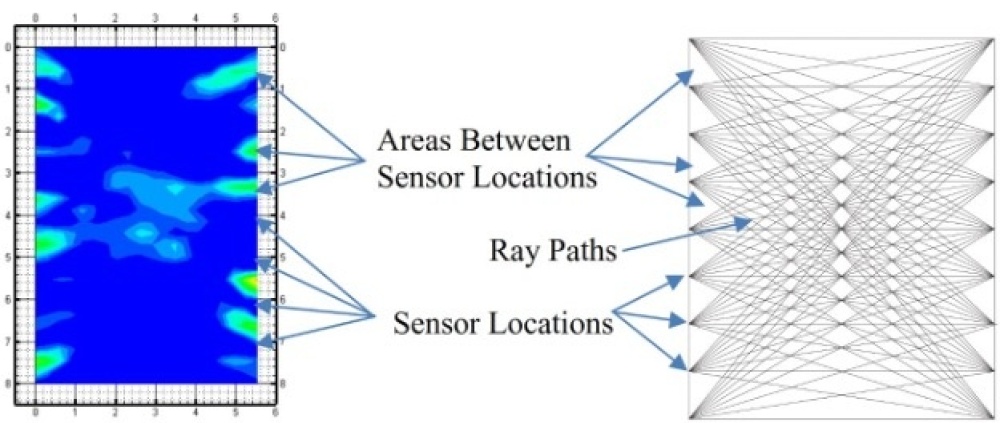

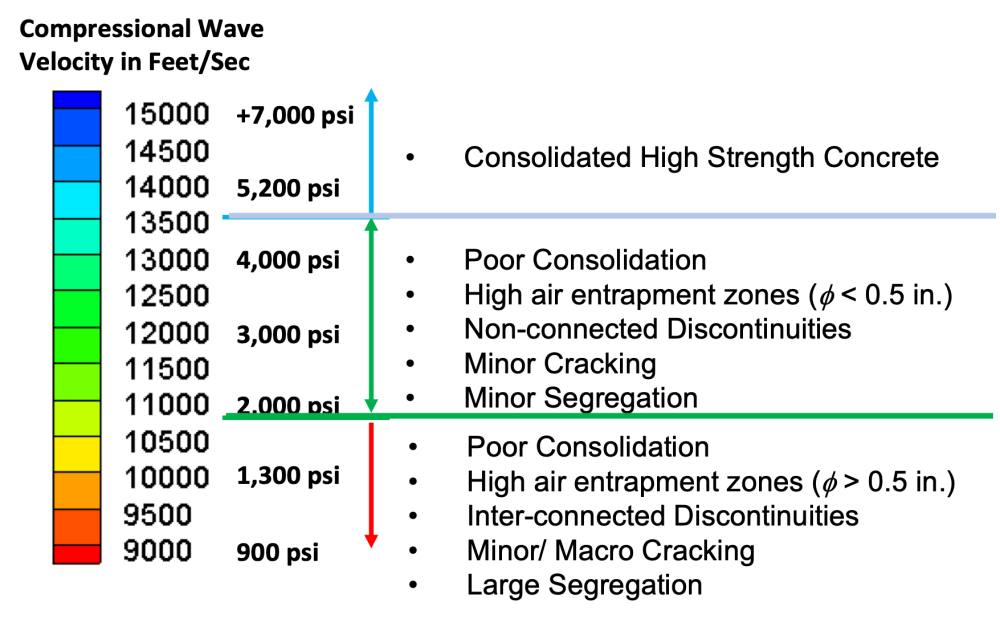
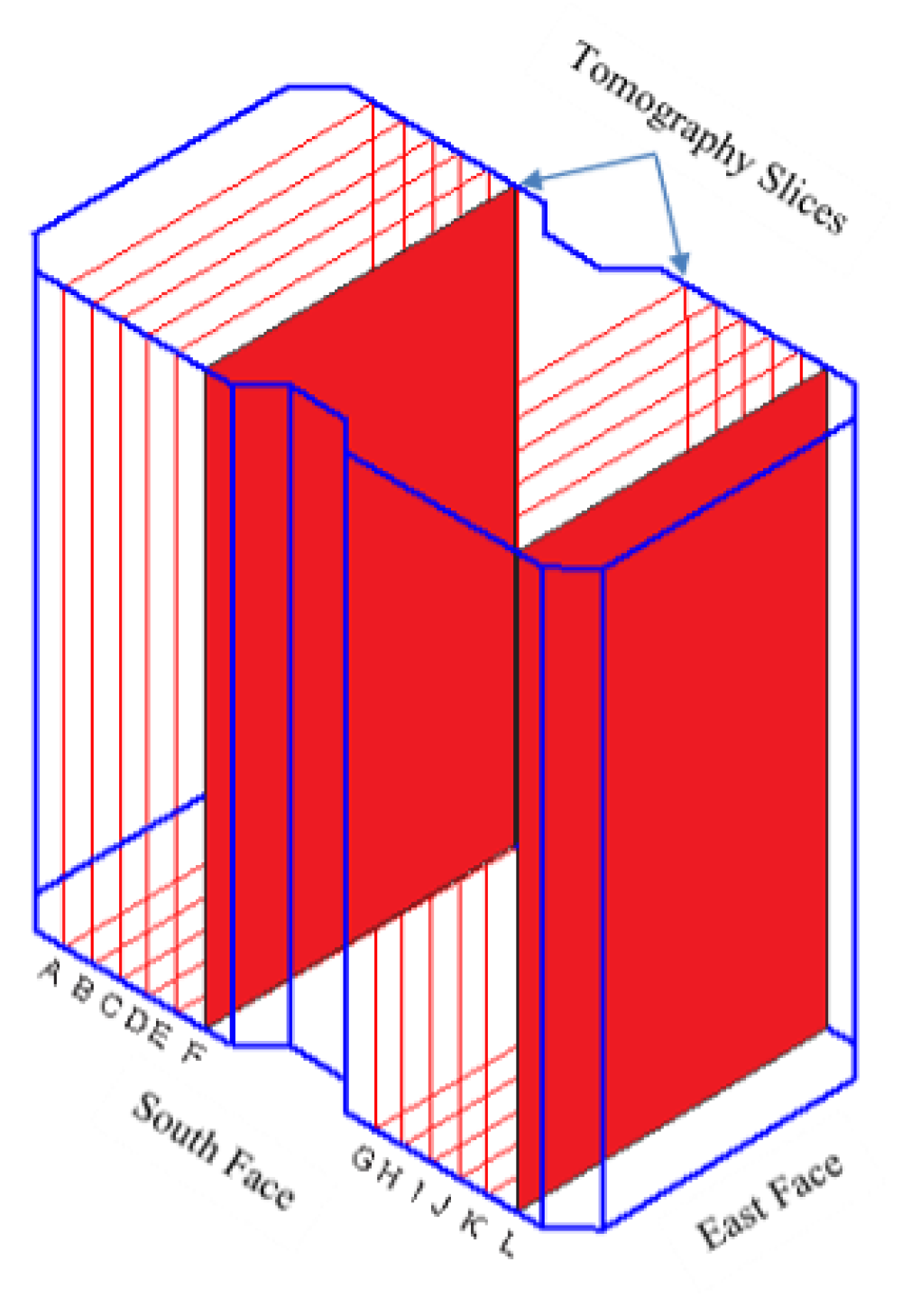
Infrared Thermography
This no-contact method detects near-surface delamination’s by measuring heat differences with an infrared camera. As the sun warms the concrete, delaminated areas heat up faster, revealing flaws just beneath the surface. The infrared image creates a visual record of present delamination’s, useful for estimating repair quantities.
Our team uses it for:
- Bridge decks, slabs, and large surface areas

Corrosion Risk Assessment
Concrete Resistivity Testing
Resistivity testing is a fast, non-destructive way to assess the likelihood of corrosion in concrete. Areas with low electrical resistivity are more likely to drive steel reinforcement corrosion, especially in the presence of chlorides or moisture.
By mapping resistivity, VCS can quickly identify zones at higher risk, even before visible damage appears. This allows for more preventative maintenance and supports smarter design decisions when evaluating corrosion protection systems.
Our team uses it for:
- Corrosion assessments
- Design of long-term cathodic protection or corrosion mitigation systems
- Preventative maintenance by identifying early signs of water or chloride ingress
Corrosion Rate Testing
This method tells you how fast steel reinforcement is actively corroding, which is critical for planning repairs or estimating the remaining service life of a structure. It applies a small electrical current to the structure and monitors potential changes to calculate the corrosion rate.
Our team uses it for:
- Life-cycle planning
- Post-event damage evaluations
- Monitoring protection system effectiveness
Corrosion Potential Mapping
This technique uses a stable reference electrode, typically a copper/copper sulfate electrode (CSE), to measure the difference in potential between the reference electrode and the steel. Measurements are taken in a grid-type pattern, which allows VCS to pinpoint areas where corrosion is likely to occur, even if there’s no visible damage yet. These measurements are essential when considering the effectiveness of global or targeted corrosion mitigation strategies.
Our team uses it for:
- Large-scale corrosion assessments
- Prioritizing repairs before damage progresses
- Supporting condition assessments and ongoing monitoring
- Evaluating the suitability of targeted vs. global mitigation solution strategies
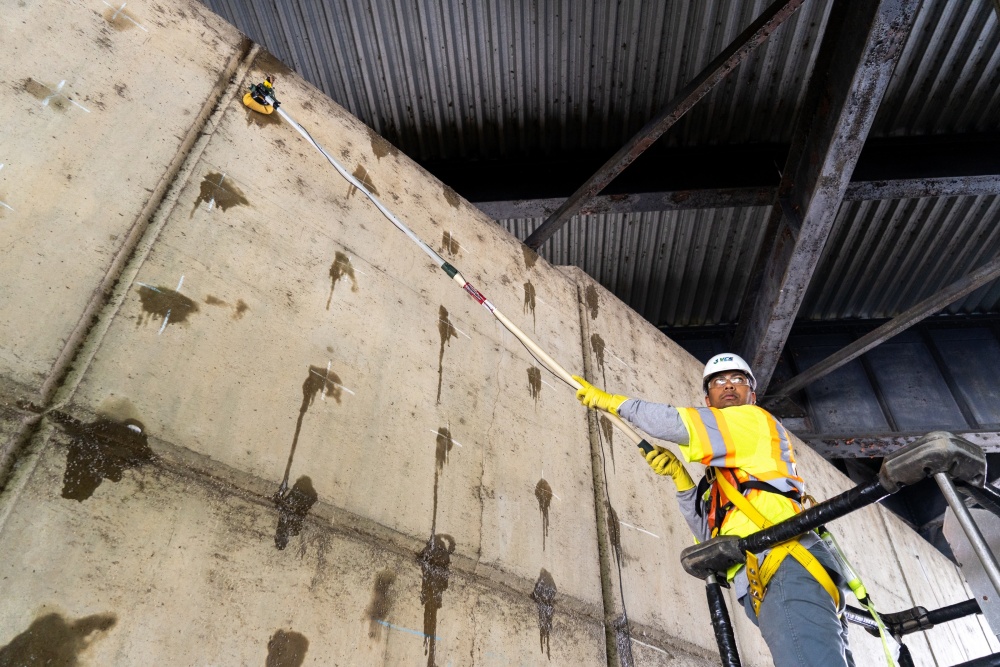
Locating Reinforcement & Measuring Cover Depth
Ground Penetrating Radar (GPR)
GPR is a rapid test method that scans the concrete to locate reinforcement, measure cover depth, and highlight potential zones of deterioration. It’s quick and versatile, often used before coring, anchoring, or slab cutting. GPR can also contribute to condition assessments by identifying anomalies in the concrete that may indicate underlying deterioration. Factors such as chloride contamination, moisture intrusion, or concrete deterioration can attenuate (weaken) the GPR signal, helping pinpoint areas that may require further investigation.
Our team uses it for:
- Verifying rebar layout and spacing
- Measuring concrete cover
- Highlighting potential deterioration zones
- Avoiding reinforcement during cutting or coring
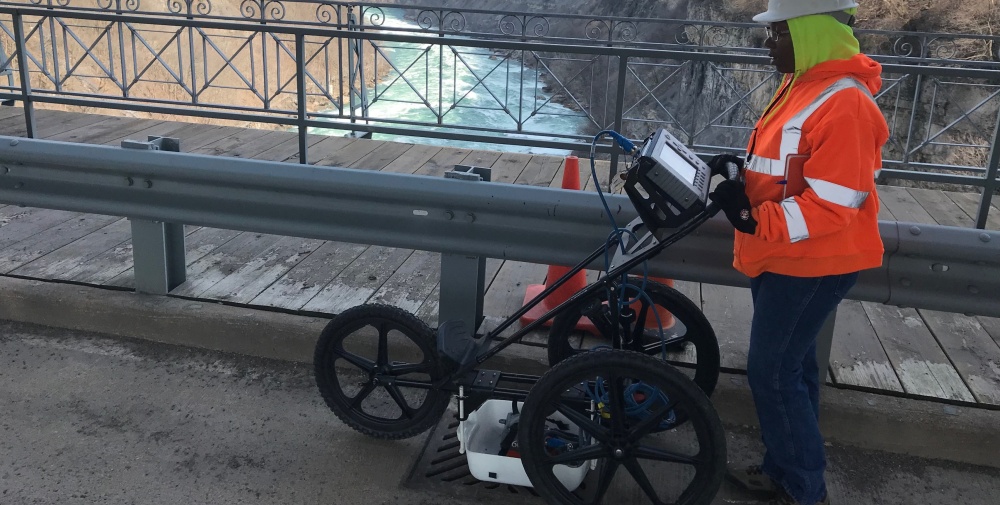

How NDT Supports Concrete Condition Assessments:
NDT plays a critical role in condition assessments, but on its own, it does not provide the full story. NDT is the data collection tool. It tells us what’s happening within the concrete.
To create an accurate and actionable condition assessment report, results from multiple NDT methods need to be analyzed together, often alongside visual inspections, historical records, construction drawings or as-builts (when available), and engineering expertise.
This combined analysis gives owners, engineers, and contractors a complete picture of the structure’s condition and the best path forward for repair or maintenance.
What Sets VCS Apart
Whether you're planning a rehabilitation, focusing on preventative maintenance, or simply want to understand what’s happening below the surface, NDT gives you the confidence to move forward.
At VCS, our NDT Division combines cutting-edge technology with decades of industry expertise to deliver tailored solutions that meet your goals. Whether you’re an engineer developing a rehabilitation strategy or an owner trying to plan a long-term asset management approach, our team brings insights and clarity that support safety, durability, and smarter repair strategies, so that you can make confident, cost-effective decisions.
Ready to Talk?
We’ll recommend the right approach and ensure you get the data you need. Without damaging the structure you’re trying to protect.
For a closer look at how these techniques are applied in the field, check out our video where the VCS team demonstrates non-destructive testing and other assessments on the New York Avenue Bridge!